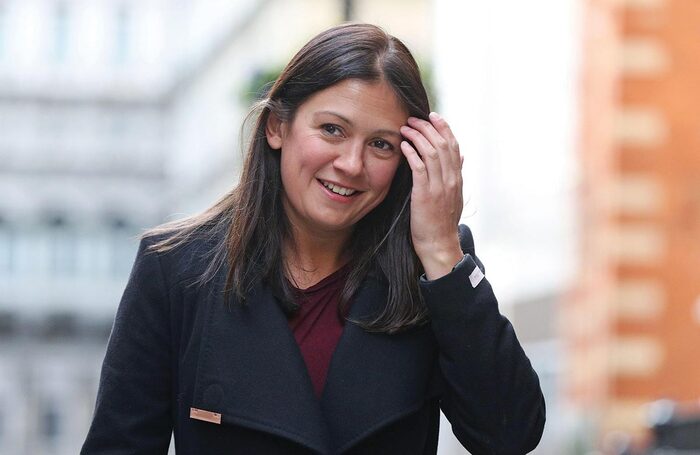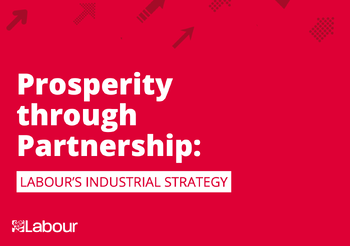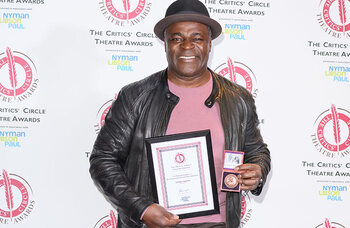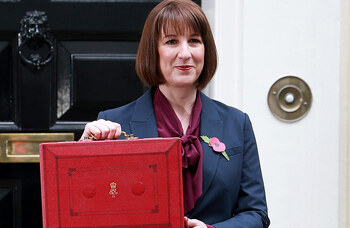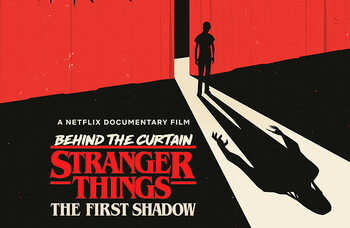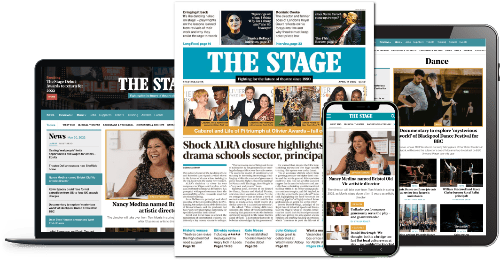Lisa Nandy’s speech reflects back to us the sector’s existential confusion
Commemorating the 60th anniversary of Jennie Lee’s white paper that shaped the founding of the Arts Council, Lisa Nandy’s announcement on new sector funding touched on more than just money matters. In this latest installation of the government’s vision and priorities for culture, the picture reflected back by the culture secretary’s speech is one of contradictions: either government’s own, or ones the sector itself has inadvertently refined.
The first contradiction is in Nandy’s mixed messaging about free speech and sponsorship, suggesting some confusion about the theatre sector’s values – and how they are realised both on stage and off.
Her speech echoed the Charity Commission’s advice that charities dial down personal opinions when presented with sponsorship opportunities, suggesting that actions such as boycotting or refusing sponsors stifle societal dialogue and cultural expression. While she claimed backlashes against cultural sponsors damaged the sector, she also described how the arts are good at holding a mirror up to society and the government – to challenge and reinterpret the world.
Nandy barely mentions investment in theatre’s unique ‘capital’ – its people
It’s a mixed message that reflects theatre’s own confusion over freedom of expression.
Nandy’s comments that “there has to be a range of views on display” on our stages and in cultural places suggests that it’s fine to have onstage interpretations of real-world issues, so long as we keep to a minimum the sector’s real-world engagement with the issues presented on stage.
It’s a contradiction many can relate to – as evidenced by the open letter to the sector, signed by 100 theatremakers, urging it to fight a “culture of fear that has taken hold in our industry”.
The dissonance elsewhere in Nandy’s speech is about how theatre measures the value of what we do: in prioritising funds to buildings investment, Nandy’s address suggests we have some way to go in articulating the sector’s need for investment in creative people. Her speech reflects a lack of clarity (within both theatre and government) in evidencing the sector’s ‘value’– its intangible assets of the creative workforce.
Continues…
While Lee’s pioneering 1965 white paper was not focused on creative freelance work, she acknowledged the precarity of this form of employment. Her vision of an Arts Council for Great Britain was one where government would build mechanisms to offer stable financial support for creative workers, emphasising that public arts funding was needed not just to support established institutions, but also those working outside of them.
The £270 million Arts Everywhere Fund announced by Nandy promises financial stability to creatives – but the details shared thus far suggest the focus is primarily on organisational infrastructure. No one can doubt the importance of government’s welcome support for the sector’s exhausted and failing infrastructure – through its £85 million Creative Foundations Fund and its earmarking of £120 million for the Public Bodies Infrastructure Fund and other initiatives – but there’s dissonance in a speech that starts with Jennie Lee then moves on to be about buildings: the focus on capital is needed, but what’s been announced is largely a series of one-off investments rather than sustained spending on the sector’s workforce.
So long as theatre complies with an approach that splices policy in terms of ‘buildings’ and ‘people’, it is rendered susceptible to government’s own number-crunching priorities
While acknowledging the interconnectedness of the creative industries and cultural sector through referencing the cross-pollination of talent from stage to screen, Nandy barely mentions investment in theatre’s unique ‘capital’ – its people. So long as theatre complies with an approach that splices policy in terms of ‘buildings’ and ‘people’, it is rendered susceptible to government’s own number-crunching priorities.
What government recognises as business capital is of critical importance when we think about cultural investment. Theatre’s bricks and mortar, and exploitable (commercial) intellectual property, means the spend – and return on investment – can be quantified by the Treasury. But theatre’s uniqueness – its real crown jewels – are the people who realise that intellectual property, the creative vision.
So how does the Treasury – or the sector itself – articulate the sector’s ‘capital growth’ that happens when a freelance producer transitions from mounting solo fringe events to producing multiple syndicated performances worldwide? Once commercialised, the capital gain is tangible, but the sector skills and the business knowledge gained and shared by that producer are not.
Theatre’s own challenges in capturing, harnessing, knowledge-sharing and evidencing freelancers’ sustainability and growth mean that the sector risks losing the profit that comes from freelancers’ career progression. We need a concerted collective effort to articulate the evidence and advocate for this recognition.
How do we make ourselves more visible to government? By bringing clarity to our own sense of ‘value’ – and to how we apply that to theatremakers, both as assets and as individuals with a multiplicity of views.
Opinion
Recommended for you
Advice
Recommended for you
Most Read
Across The Stage this weekYour subscription helps ensure our journalism can continue
Invest in The Stage today with a subscription starting at just £7.99
 Amanda Parker
Amanda Parker